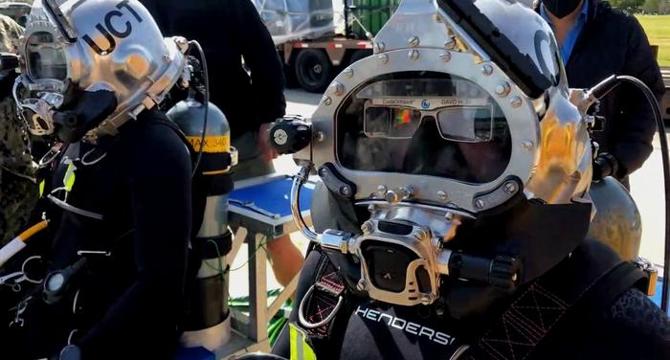Bioengineer
1M
381

Image Credit: Bioengineer
Illuminating the Depths: DAVD Display Enhances Navigation for Navy Divers in Undersea Environments
- DAVD (Divers Augmented Vision Display) is a cutting-edge system designed to enhance the operational efficiency of Navy divers and addresses the challenging and inhospitable underwater environments.
- Navy divers use DAVD to gain access to a heads-up display that mirrors the function of virtual reality goggles, providing visual enhancements for better navigation.
- The incorporation of augmented reality software capabilities enables sonar images and critical data to overlay directly onto a diver’s visual field, fostering unparalleled environmental awareness by merging digital and physical realities.
- The DAVD system allows Navy divers to receive and utilize various forms of data, including instructional videos, technical manuals, images, and messages, which facilitate an efficient and informed dive experience.
- The system proves indispensable for navigational purposes and training, providing divers critical insights before they enter the water, and received positive feedback from Lt. Matthew Coleman, NAVSEA assistant for salvage operations.
- Multiple iterations of the DAVD system went through rigorous testing, and approximately 15 systems are actively deployed across nine naval commands, showcasing the versatility of the system in both civil and naval operations.
- DAVD played a pivotal role in mapping waters surrounding the sunken USS Arizona and salvage operations following the collapse of Baltimore’s Francis Scott Key Bridge.
- Potential upgrades include integrating GPS technology for precise geolocation, advancements in physiological monitoring, and eye-tracking.
- Through continuous engagement with the diving community, the U.S. Navy is poised to meet current operational demands while adapting to evolving requirements.
- The introduction of DAVD stands as a testament to cohesive interdisciplinary partnerships within the realms of technology, engineering, and military service.
Read Full Article
22 Likes
For uninterrupted reading, download the app